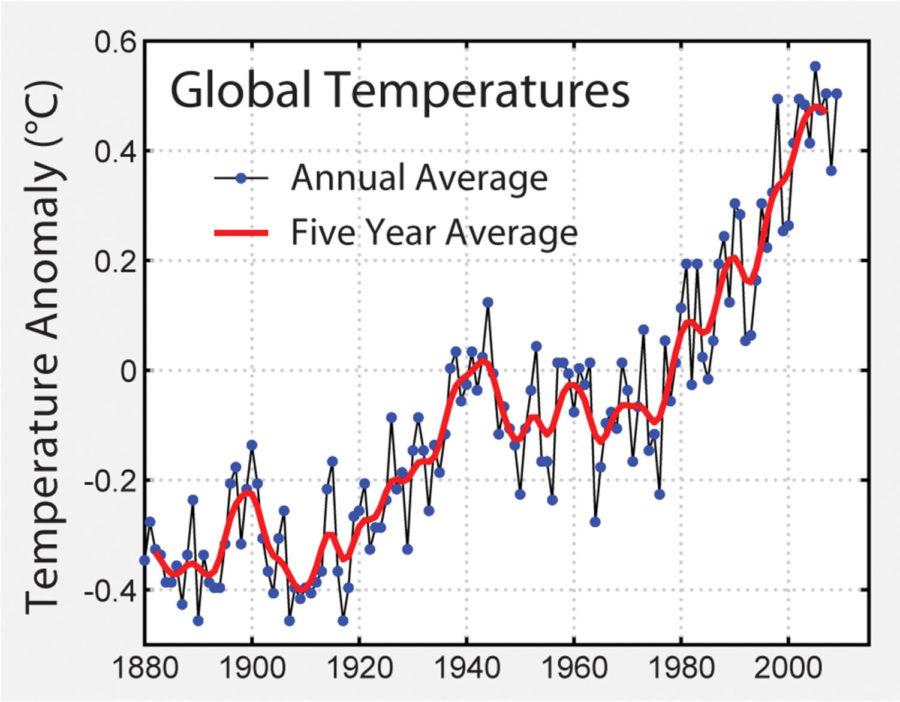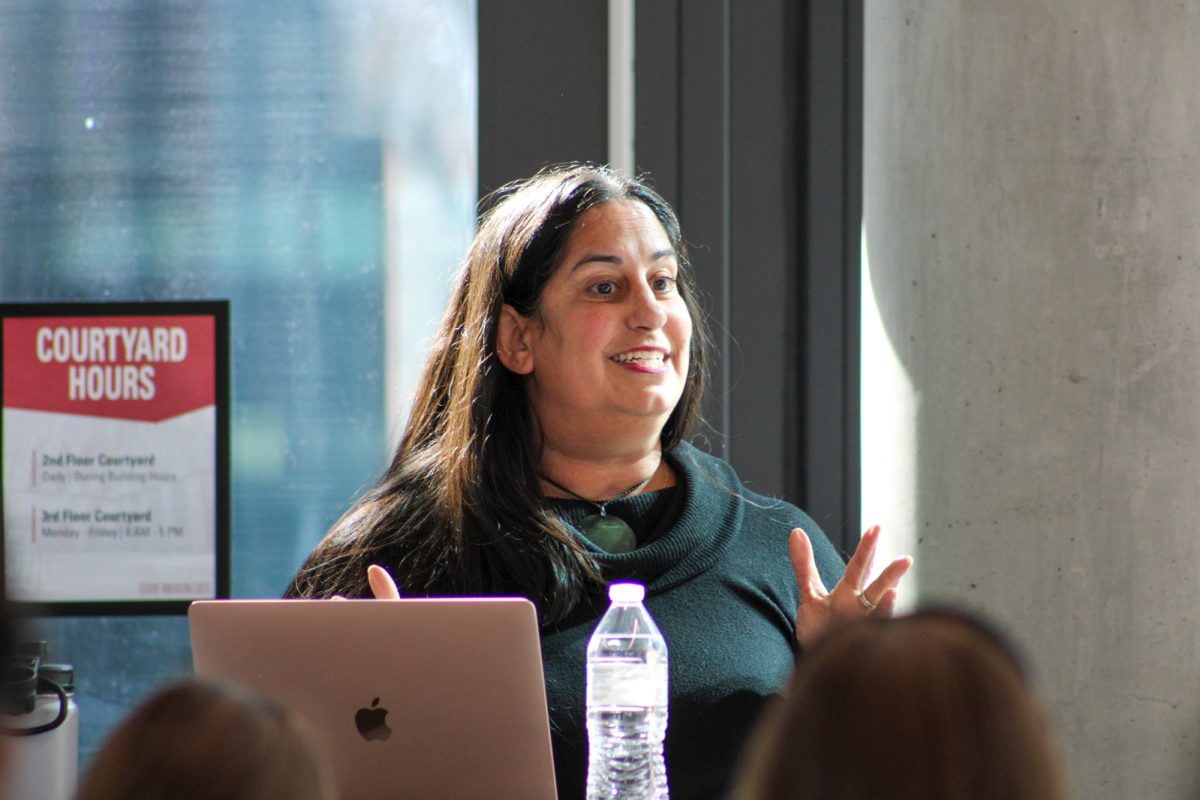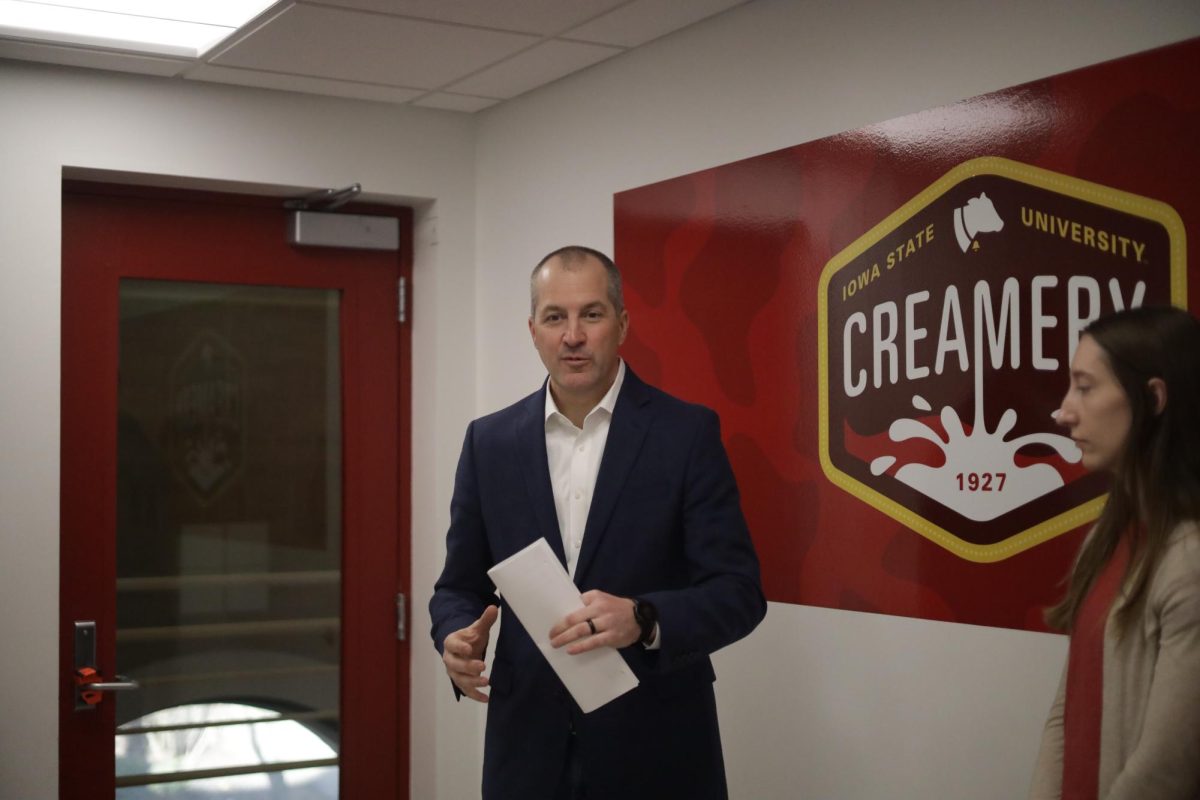Brown: Climate change is still here, and it’s real
Opinion: Brown 1/24
January 24, 2013
With all of the recent focus on firearm rights, economic cliffs and, for those of us here in Ames, the return of wintery weather, one important issue seems all but forgotten: climate change.
Whether you believe global warming to be a liberal media conspiracy, or you think that humans really are causing an unprecedented change in climate, you have almost certainly heard about the issue. Unfortunately, we all too often hear things that confuse our understanding of the issue more than they clarify it.
One example of such a confusing statement is that made by Fred Singer, a distinguished physicist, that global temperatures are not rising. Singer claims that “the current [global surface temperature] trend over the past decade has been approximately zero.” Singer and some of his associates have claimed that global temperatures have actually decreased in every ten-year period for the last seventy years, which is about how long we have been accurately measuring Earth’s surface temperature.
This claim has been made famous by Skeptical Science, a website dedicated to debunking the “science” of climate change deniers. According to the data (which is an amalgamation of observations from NASA’s Goddard Institute for Space Studies, the National Climate Data Center, and a joint global surface temperature record called HadCRUT4), what skeptics have said is pretty much true. During consecutive roughly 10-year periods, the average global surface temperature has decreased.
What the data also shows is a marked increase during the whole seventy years of observation. Skeptical Science has dubbed this “going down the up escalator.” This apparent paradox is created when pieces of a whole data set are examined separately so that the larger picture is disregarded.
Such a cheap trick can be easily identified and countered by an experienced scientist or by anyone familiar enough with the information being presented. A problem arises, however, when average people are presented with misleading information masquerading as science.
Singer, as well as a host of other champions of climate change skepticism have very real scientific credentials that, at first glance, mark their conclusions as reputable. Their decision to forego their responsibility as scientists to present good science has huge ramifications for the rest of the world.
It is inherently the responsibility of members of any field of study to provide information to the rest of us when it is needed. Just as we trust mechanics to truthfully tell us what is wrong with our cars and as we trust lawyers to truthfully tell us the law, we are expected to trust scientists to tell us about science. Any other stance would be silly. To not trust the opinion or statement of someone far more informed than yourself is not shrewd; it is delusional.
When members of specific groups that are given our trust abuse it, such as a mechanic falsifying the cost of parts, we are ultimately at a loss.
In climate change, when scientists present their findings, the vast majority of people have no possible way to effectively check their work. It is up to others in their field to do this, a practice known as peer review. Through this peer review, scientists who are focused on climate can come to a consensus as to what the overall conclusion of their collective work is.
That consensus has apparently been reached. According to the National Academy of Science, 97 percent of experienced and active climatologists agree that climate change is happening and is manmade.
Junkscience.com disputes this report, claiming that all this means is that 97 percent of climatologists are paid by the government or climate change scare groups. Steve Milloy, a writer for junkscience.com, succinctly says, “If you can read a graph, then you have all the tools necessary to decide the climate controversy for yourself.”
Steve is right. Literacy and spatial understanding really are the building blocks of climatology. Following Steve’s logic, if you have a mirror and a power drill, voila! You can be your own dentist.
What Steve leaves out is the painstaking years of study and observation that allow for true understanding of both material and study design as well as the ability to recognize further courses of inquiry.
For some, manmade climate change is just another part of the giant conspiracy aimed at wasting our taxes. For others who are interested in looking past the confusing and conflicting statements made by “the experts,” a 97 percent agreement among those educated and active in the field is probably a good reason to start believing in man-made climate change.
——————————————————————————————Phil Brown is a senior in political science, biology and environmental studies from Emmetsburg, Iowa.







